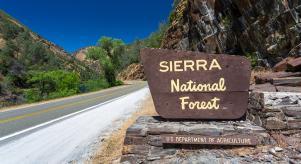
How soil science helps solve crimes
Professor Tony Brown is an expert in soil science based at the University of Southampton. He spoke with us about how his area of expertise can help in forensic investigations, with specific reference to the murders of Derek and Eileen Severs.
What is soil science? How does it work?
Soil science is a broad area of science that involves both the biological and the physical composition of soil; how soil forms, the processes that occur within the soil and the services that the soil provides to us via agriculture and air.
Soil science can also be applied in forensic investigations because you need to understand where the soil came from and if you understand how soil characteristics come about then you can use it forensically to, for example, trace the movement of vehicles or where people have been.
What drew you to soil science?
Well I've always been interested in nature really and it was my interest being brought up in the countryside and I spent most of my youth being outdoors.
For my PHD I specialised in pollen analysis. That's the analysis of ancient pollen that's trapped within soils and sediments. My specialism is in fact forensic palynology, which is the use of pollen, spores, and other microfossils within soils for forensic investigation.
How often are you called upon to help in police investigations?
On average I'd say I do between one and two cases a year. It's a very specialist area. There are basically about 2 people who do it in the UK and we only really work on quite major cases where other forms of evidence are perhaps problematic or there isn't a lot of other evidence. I've also worked for the United Nations in Bosnia which was a much bigger case than most of the UK criminal cases. I advise on other cases, so perhaps five or six cases come across my desk each year.
Can you remember the very first case you ever worked on?
The very first case I ever worked on was the Severs case. That was starting at the deep end. I think it was necessary for a large case to convince the police that these techniques would be useful. It came about because one of the co-ordinators who was in charge of the forensic evidence for this case had done archaeology at university and in doing that he came across soil analysis. He actually phoned the geology department of the university I was in.
I went down to the forensic science service laboratories at Huntington to sample the vehicle because I realised from what the police said that there was a very good chance that the evidence that was on this vehicle could be very useful to the investigation, which at that time was still at the stage of looking for the bodies. From you analysing the vehicle, how long would it take you to deduce that your hunch was correct?Proving the hunch is correct in this case can only be done once the bodies are found. I think that once you've done the inspection of the vehicle you can almost immediately say "Yes I think this is going to be useful" or "We're not going to get anywhere with this", and sometimes I have been shown vehicles by the police and said "You're not going to get anywhere with this. It's very unlikely that this material is going to be particular enough." After that you may very quickly, within 12 hours if you take some samples and look at them under the microscope without doing any processing, you can sometimes see the minerals that could be useful to the police straight away. That was the case with the Severs case.
There were some plant fragments and also some minerals that you didn't even have to do processing to see that they could be useful. To do the pollen, it takes a minimum of about 48 hours to do the processing, and then probably between 4-5 days and a week to do enough analyses to say "I think we can narrow it down to this particular area." It varies according to how much material there is and how complex the case is so it could be a few hours but it's more likely to be a week or so.
The technology has changed a bit. We have rather more sophisticated X-ray diffraction machines which do the mineralogy. They are digital now as opposed to analogue. There are one or two new techniques. If I was given the same material today I would use a different machine. The actual pollen work has changed in the sense that we've improved. Our discrimination of types is better now than it was 25 years ago, but fundamentally the pollen side hasn't changed that much. One of the advantages of pollen and microfossil work is that the pollen is either there or it's not. In some senses therefore it's more of a robust technique than for example sediment chemistry, which is always open to many interpretations.




